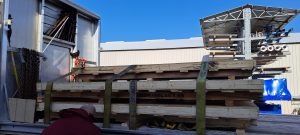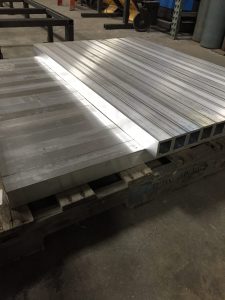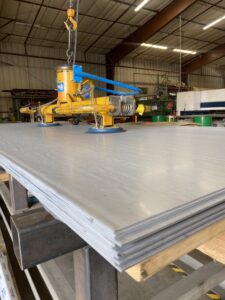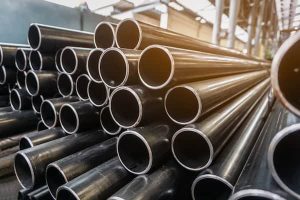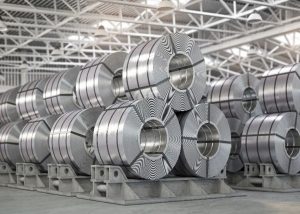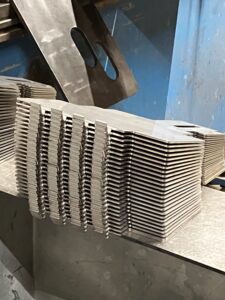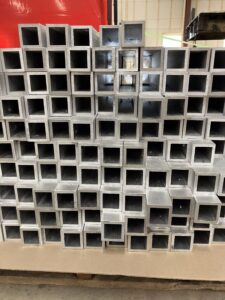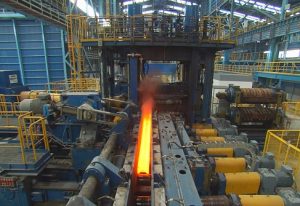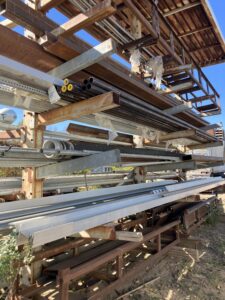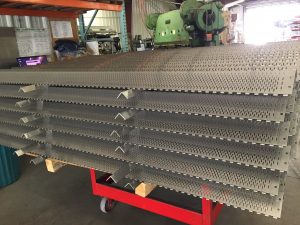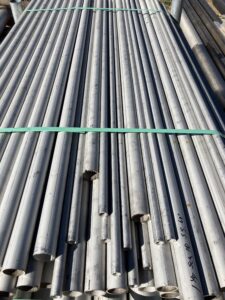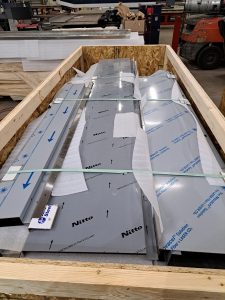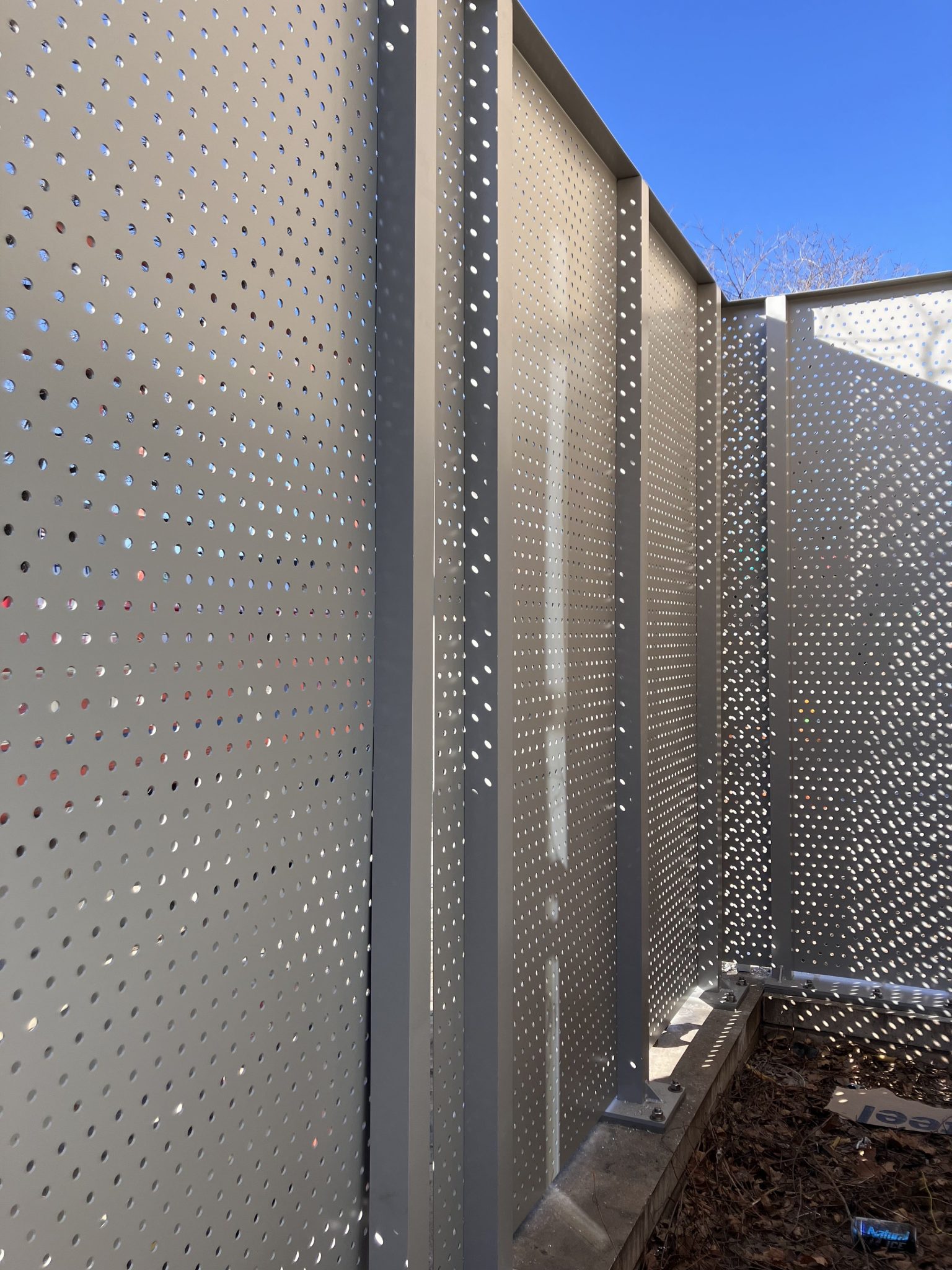Navigating the Metal Market Maze: Tariffs, Supply Chains, and the Future of Fabrication
In a recent episode of Astro Metal Craft’s “Shop Talk,” Emmy Ross (Director of Business Development), along with Tony Ross (President of Astro), Zach Pilarski (Head of Purchasing), and John Menk from McNeilus Steel, dived into the complex world of metal tariffs and their ripple effects across the industry. The conversation explored everything from the immediate impact of new tariffs to long-term strategies for navigating an uncertain market.
Understanding the Tariff Landscape
Tony kicked off the discussion by acknowledging the ever-shifting nature of the tariff situation, making it challenging to pinpoint the exact impact. A key point of concern is the increased tariffs on Canadian aluminum, a crucial source for many U.S. manufacturers. While the long-term consequences remain unclear, the immediate effect has been felt most acutely in the aluminum market.
John from McNeilus Steel, a major wholesaler, provided valuable insights into the steel market. He emphasized the vast array of steel types, from sheet and plate to tube and structural steel. While a significant portion of their steel is domestically sourced, a considerable amount, particularly sheet steel, comes from Canada. He noted the immediate impact of tariffs on aluminum, with Canada, Ukraine, and China being major global players.
Tariffs vs. COVID: Separating the Issues
A crucial point raised by John was the need to differentiate the current tariff situation from the supply chain disruptions and price escalations experienced during the COVID-19 pandemic. Currently, there are no significant supply chain issues, but the tariffs are undeniably influencing prices.
Impact on Projects and Forecasting
Zach, from Astro Metal Craft’s purchasing department, confirmed that price increases have been observed across steel, stainless steel, and aluminum, with aluminum seeing the most volatility. While recent Astro projects haven’t been heavily reliant on aluminum, concerns remain about the potential for escalating prices on future projects, especially architectural work.
The discussion highlighted the difficulty in forecasting material costs. John explained that McNeilus doesn’t engage in extensive forecasting, as material costs are often unknown until shipment. Many contracts are tied to fluctuating market indexes. Tony echoed this sentiment, emphasizing the lack of a “crystal ball” and the need to piece together clues to understand market trends. He suggested that the tariffs might be an attempt to rebalance trade relationships and address the strong US dollar’s impact on domestic manufacturing competitiveness.
Domestic Sourcing and “Made in America”
The conversation touched on the increasing demand for “Made in America” materials. While this trend is often driven by government regulations, Zach noted a growing concern among customers about price volatility, leading them to seek more stable domestic sources. John pointed out the “soft costs” associated with domestic sourcing, including the need for extensive documentation and proof of origin.
Panic Buying and Market Volatility
John noted a surge in panic buying in February and March, putting pressure on inventories and contributing to price increases. He advised against heavy buying at this time, suggesting that a potential slowdown in June and July might offer a better opportunity. However, he also acknowledged the difficulty in forecasting market trends in the current environment.
Tony highlighted the challenges for steel mills in managing fluctuating demand, as they typically operate at a relatively consistent capacity. He also mentioned the growing trend of mini-mills, which offer more flexibility in adjusting production levels.
The Global Steel Market and Circumvention
The discussion addressed the global nature of the steel market and the issue of circumvention, where countries attempt to bypass tariffs by routing materials through other nations. John noted that while the US produces a significant amount of steel, it’s dwarfed by China’s production. He also mentioned efforts to encourage China to reduce its excess steel production to stabilize global supply and demand.
Historical Perspective and the Future
The panel discussed the relative novelty of large-scale tariffs in recent history, citing the Smoot-Hawley Tariff Act as a rare example. The current situation presents unique challenges, requiring businesses to adapt and remain agile.
The Impact on US Manufacturing
The conversation explored the goal of the tariffs to boost US manufacturing. While some smaller shops have faced closures, others are investing in new technology and automation. The panelists expressed optimism about the long-term prospects of US manufacturing, highlighting its innovative spirit and adaptability.
Final Thoughts and Reassurances
John emphasized that despite the current uncertainties, the supply chain is intact, and things will eventually stabilize. He advised businesses to focus on immediate needs and revisit their purchasing strategies frequently. Tony echoed this sentiment, urging businesses to remain adaptable and focus on their core competencies.
Key Takeaways:
- The metal market is currently experiencing volatility due to new tariffs, primarily impacting aluminum prices.
- It’s crucial to distinguish the tariff situation from previous COVID-related supply chain disruptions.
- Forecasting is challenging, and businesses should focus on short-term needs and adapt to changing market conditions.
- The long-term impact of the tariffs remains uncertain, but there is optimism about the resilience and adaptability of the US manufacturing sector.
- Domestic sourcing is becoming increasingly important, but it comes with added documentation requirements.
This blog post provides a comprehensive overview of the key issues discussed in the “Shop Talk” episode, offering valuable insights for businesses navigating the complex metal market landscape. We hope you enjoy the episode!



